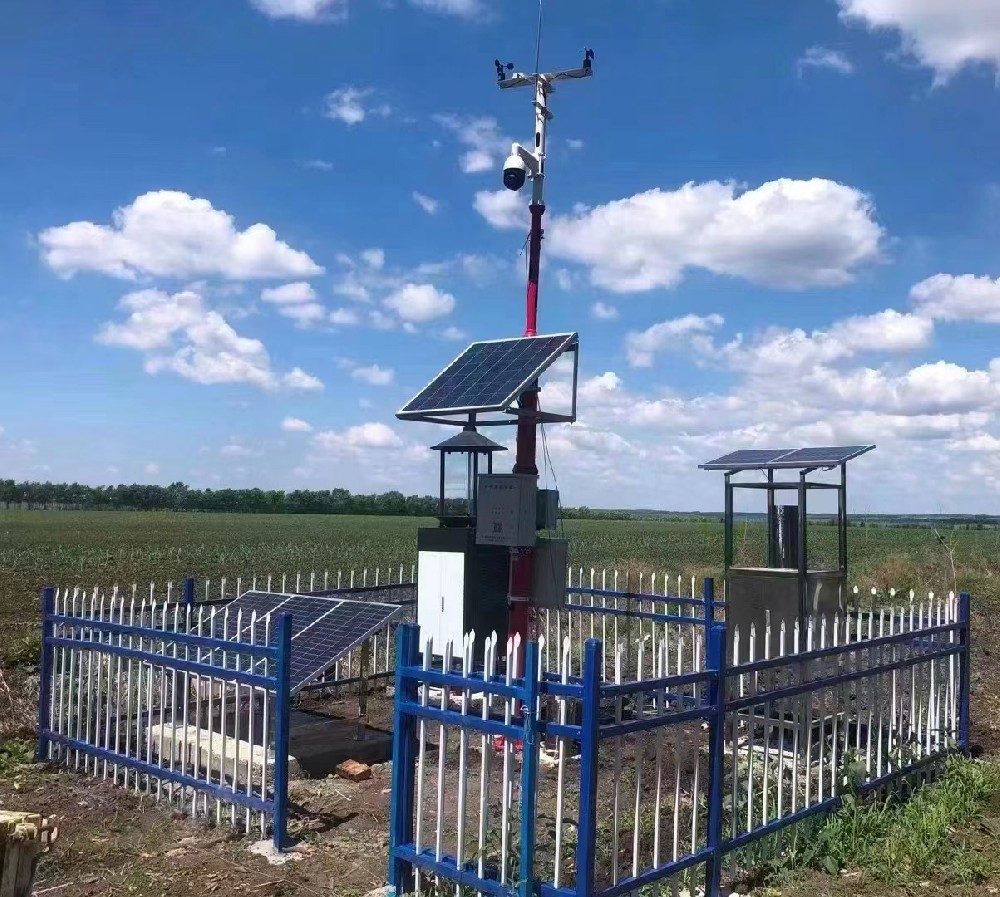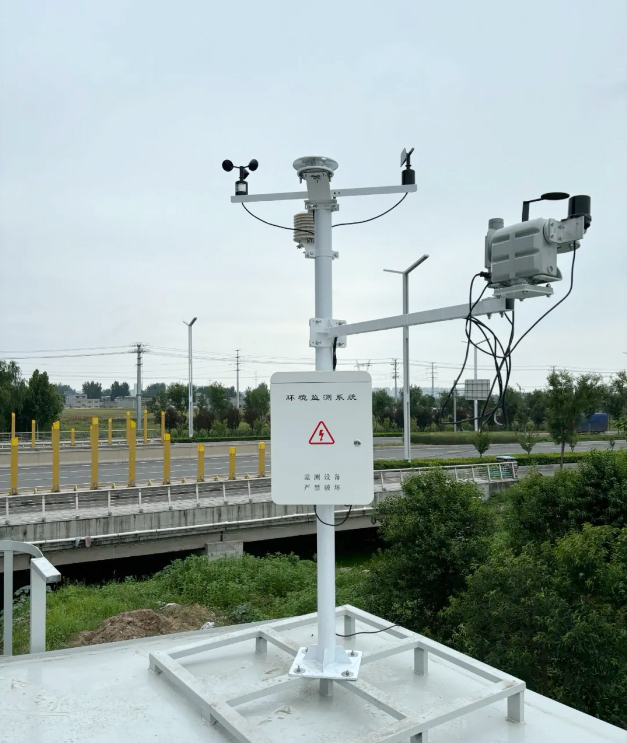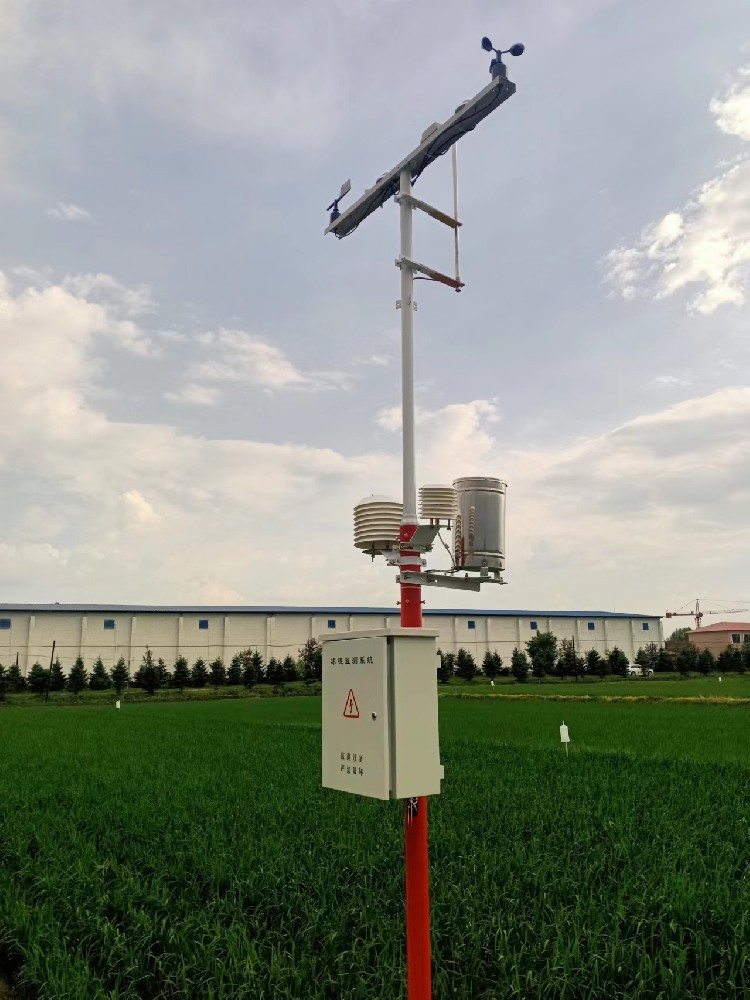

— Blogs —
—Products—
 Consumer hotline +8618073152920
Consumer hotline +8618073152920 WhatsApp:+8615367865107
Address:Room 102, District D, Houhu Industrial Park, Yuelu District, Changsha City, Hunan Province, China
Product knowledge
Time:2024-11-19 16:38:57 Popularity:261
An automatic weather station is a highly integrated meteorological monitoring device that operates without direct human intervention. It automatically collects, processes, stores, and transmits various meteorological parameters, including, but not limited to, air temperature, humidity, wind speed, wind direction, atmospheric pressure, rainfall, and radiation.
- Sensors: Responsible for detecting various meteorological elements, such as temperature and humidity sensors, wind speed and direction sensors, rain gauges, etc.
- Data Logger: The core component that processes sensor data, performs linearization and quantization conversion, stores data, and controls data transmission.
- Power Supply System: Typically includes a combination of solar panels and batteries to ensure continuous operation in the field or locations without a stable power supply. It may also support grid power or adapter power.
- Transmission System: Data is transmitted to the central station or cloud platform via methods like GPRS, 4G, 5G, Wi-Fi, RS485, Lora, etc., supporting both local extraction and wireless data transmission.
- Mounting Components: Used to fix and support the entire device, adapted to the installation needs of different environments.
- Multi-functional Integration: Capable of simultaneously monitoring multiple meteorological elements, suitable for various fields.
- Low Power Consumption and Quick Deployment: Ideal for long-term monitoring in the field, easy to install and maintain.
- Intelligent: Capable of automatic data processing and transmission, reducing human intervention.
- Wide Range of Applications: From weather forecasting, agriculture, forestry, and environmental protection to ocean observation, urban planning, and airport management.

The primary difference between automatic and traditional weather stations lies in the level of automation and data transmission method. Traditional weather stations often require manual data reading, while automatic weather stations can automatically send data in real-time or at set intervals, improving the efficiency and continuity of data collection. This reduces labor costs and enables continuous operation in harsh environments. Additionally, automatic weather stations offer stronger networking and remote monitoring capabilities, meeting the high demands of modern meteorological services.
Automatic weather stations can be classified into various types based on application scenarios and monitoring needs:
- Ground-based Automatic Weather Station: Primarily deployed on land surfaces to monitor ground meteorological elements such as temperature, humidity, air pressure, wind speed, wind direction, and rainfall. Common in meteorological observation stations, airports, ports, farms, forests, etc.
- High-altitude Automatic Weather Station: Deployed on platforms like airplanes, balloons, and drones to monitor high-altitude meteorological parameters, providing data on various atmospheric layers, which is critical for flight safety and weather forecasting.
- Marine Automatic Weather Station: Deployed on ocean buoys, ships, or seabed observation platforms to monitor oceanic meteorological and environmental parameters such as sea temperature, sea currents, waves, salinity, wind speed, and wind direction.
- Comprehensive Automatic Weather Station: Capable of monitoring a variety of meteorological elements, providing a wide range of functions, and applicable to many different scenarios. Common in meteorological observation stations, environmental monitoring stations, agricultural meteorology stations, etc.
- Specialized Automatic Weather Station: Monitors specific meteorological elements or is used for particular application scenarios. For example, radiation meteorological stations (monitor solar radiation), precipitation monitoring stations (measure rainfall), wind profile radar stations (monitor wind field structure), etc.

- Wired Automatic Weather Station: Uses wired cables to transmit monitoring data to data centers or servers. Suitable for fixed locations where high data transmission reliability is required.
- Wireless Automatic Weather Station: Uses wireless communication technologies (e.g., satellite communication, 5G/4G, Wi-Fi) to transmit data to remote data centers. Suitable for mobile platforms, remote areas, or scenarios requiring quick deployment.

- Fully Automated Weather Station: All processes, including monitoring, data collection, processing, transmission, and storage, are fully automated without human intervention. Ideal for long-term continuous observation.
- Semi-Automated Weather Station: Some processes require human involvement, such as equipment maintenance or data verification. Suitable for specific needs or resource-limited environments.
- Small-Scale Automatic Weather Station: Simple structure, small size, easy to carry and deploy. Common for mobile observation and temporary monitoring.
- Large-Scale Automatic Weather Station: Complex structure with full functionality and monitoring of many elements. Suitable for long-term fixed observation and scientific research.

The working principle of NiuBoL automatic weather stations is based on the integrated application of various high-precision sensors. These sensors include:
- Wind Speed Sensor: Measures wind speed.
- Wind Direction Sensor: Measures wind direction.
- Ultrasonic Integrated Sensor: Measures both wind speed and wind direction.
- Atmospheric Temperature, Humidity, and Pressure Sensor: Measures temperature, humidity, and atmospheric pressure.
- Rain Gauge: Measures rainfall.
- Snow Depth Sensor: Measures snow depth.
- Visibility Sensor: Measures visibility.
- Solar Radiation Sensor: Measures solar radiation.
These sensors continuously collect and transmit meteorological data, which is processed and stored by the built-in data processing system. The final results are displayed on the user interface. This entire process is highly automated, requiring minimal human intervention, significantly improving the accuracy and efficiency of monitoring.
NiuBoL automatic weather stations are widely used across multiple fields, including but not limited to:
- Poultry Farming: Monitoring environmental temperature and humidity to provide a comfortable growth environment for animals.
- Greenhouse Automation: Achieving precise control of the greenhouse environment to promote crop growth.
- Irrigation Agriculture: Rationally allocating water resources based on meteorological data to improve irrigation efficiency.
- Forest Monitoring: Preventing forest fires and protecting the ecosystem.
- Smart Agriculture: Providing intelligent solutions for agricultural production.
- Solar Energy Utilization: Optimizing solar power generation efficiency.
- Environmental Monitoring: Real-time tracking of environmental changes to ensure safety.
- Meteorological Monitoring: Providing data support for meteorological research.
As a manufacturer and supplier of automatic weather stations, NiuBoL has achieved significant success in international trade. Our products are exported to over 68 countries, and we have established long-term stable relationships with nearly 100 partner companies. This success is attributed to our strong technological R&D capabilities, comprehensive product line, and deep understanding of customer needs, enabling us to respond quickly and effectively.
In terms of business management, NiuBoL adheres to the philosophy of “pragmatism and excellence”:
- Technological Innovation: We are committed to developing cutting-edge meteorological monitoring technologies for our customers.
- Quality Assurance: We rigorously control product quality to ensure that every product operates reliably and stably.
- Professional Services: We provide expert pre-sales consultation, in-sales support, and post-sales service to address customer concerns.
- Customer Satisfaction: We respond promptly to after-sales feedback, addressing customer needs and issues to ensure ongoing customer satisfaction.

Conclusion
As a leading manufacturer of automatic weather stations, NiuBoL is dedicated to technological innovation and product improvement, offering high-quality and efficient meteorological monitoring solutions to customers. In the future, we will continue to expand both domestic and international markets, strengthen cooperation and communication with partners, and jointly promote the innovation and development of meteorological monitoring technologies. We also look forward to collaborating with more people interested in the field of meteorological monitoring, creating a bright future together, and contributing to the development of meteorological monitoring efforts.
Automatic-Weather-Station(aws)Installation-Training-Manual.pdf
Related recommendations
Sensors & Weather Stations Catalog
Agriculture Sensors and Weather Stations Catalog-NiuBoL.pdf
Weather Stations Catalog-NiuBoL.pdf
Related products
 Combined air temperature and relative humidity sensor
Combined air temperature and relative humidity sensor Soil Moisture Temperature sensor for irrigation
Soil Moisture Temperature sensor for irrigation Soil pH sensor RS485 soil Testing instrument soil ph meter for agriculture
Soil pH sensor RS485 soil Testing instrument soil ph meter for agriculture Wind Speed sensor Output Modbus/RS485/Analog/0-5V/4-20mA
Wind Speed sensor Output Modbus/RS485/Analog/0-5V/4-20mA Tipping bucket rain gauge for weather monitoring auto rainfall sensor RS485/Outdoor/stainless steel
Tipping bucket rain gauge for weather monitoring auto rainfall sensor RS485/Outdoor/stainless steel Pyranometer Solar Radiation Sensor 4-20mA/RS485
Pyranometer Solar Radiation Sensor 4-20mA/RS485
Screenshot, WhatsApp to identify the QR code
WhatsApp number:+8615367865107
(Click on WhatsApp to copy and add friends)